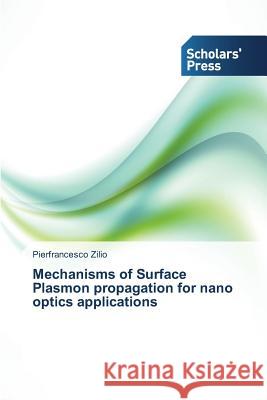Mechanisms of Surface Plasmon propagation for nano optics applications » książka
Mechanisms of Surface Plasmon propagation for nano optics applications
ISBN-13: 9783639709018 / Angielski / Miękka / 2014 / 248 str.
This book presents several theoretical, numerical and experimental studies in the field of plasmonics, which I carried out during my PhD. One basic problem in plasmonics is the study of optical Bloch modes of planar arrays of metallic nanostructures. Here a new finite-elements-based numerical approach for the modal analysis of such structures is described. Then I present a thorough investigation of the optical properties of a well-known plasmonic crystal, which is the 1-D lamellar grating. The focus here is the possible use of this structure as a light trapping device for photovoltaics applications. Another treated topic is plasmonic nanofocusing: an experiment involving metal-coated dielectric wedges is discussed. A similar structure is then studied for the implementation in an optoelectronic biosensor based on a high electron mobility phototransistor. Finally a class of particular nanostructures is addressed, termed as plasmonic vortex lenses, constituted by spiral and circular grooves on a gold surface, which are able to impress an arbitrary orbital angular momentum to the propagating surface plasmons.
This book presents several theoretical, numerical and experimental studies in the field of plasmonics, which I carried out during my PhD. One basic problem in plasmonics is the study of optical Bloch modes of planar arrays of metallic nanostructures. Here a new finite-elements-based numerical approach for the modal analysis of such structures is described. Then I present a thorough investigation of the optical properties of a well-known plasmonic crystal, which is the 1-D lamellar grating. The focus here is the possible use of this structure as a light trapping device for photovoltaics applications. Another treated topic is plasmonic nanofocusing: an experiment involving metal-coated dielectric wedges is discussed. A similar structure is then studied for the implementation in an optoelectronic biosensor based on a high electron mobility phototransistor. Finally a class of particular nanostructures is addressed, termed as plasmonic vortex lenses, constituted by spiral and circular grooves on a gold surface, which are able to impress an arbitrary orbital angular momentum to the propagating surface plasmons.











